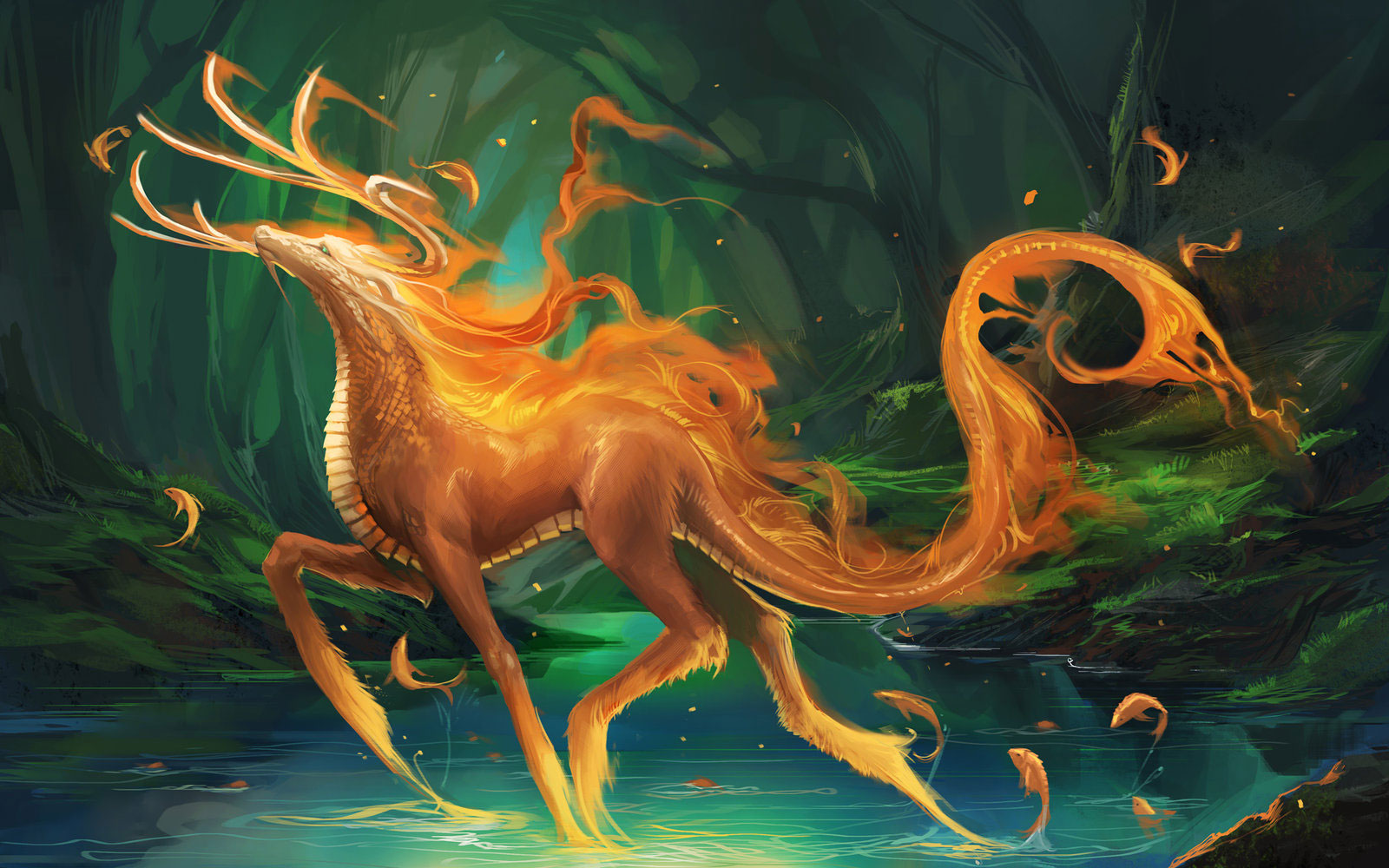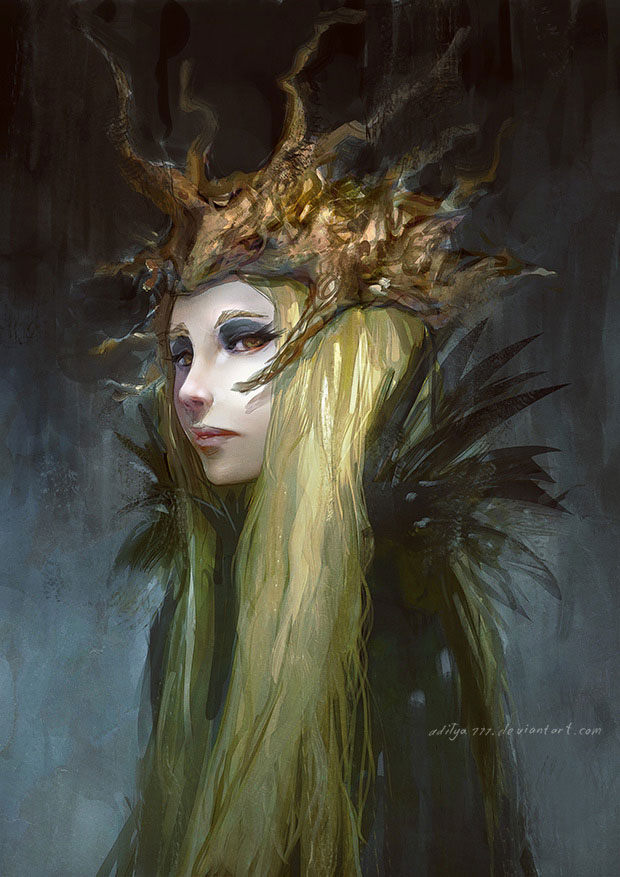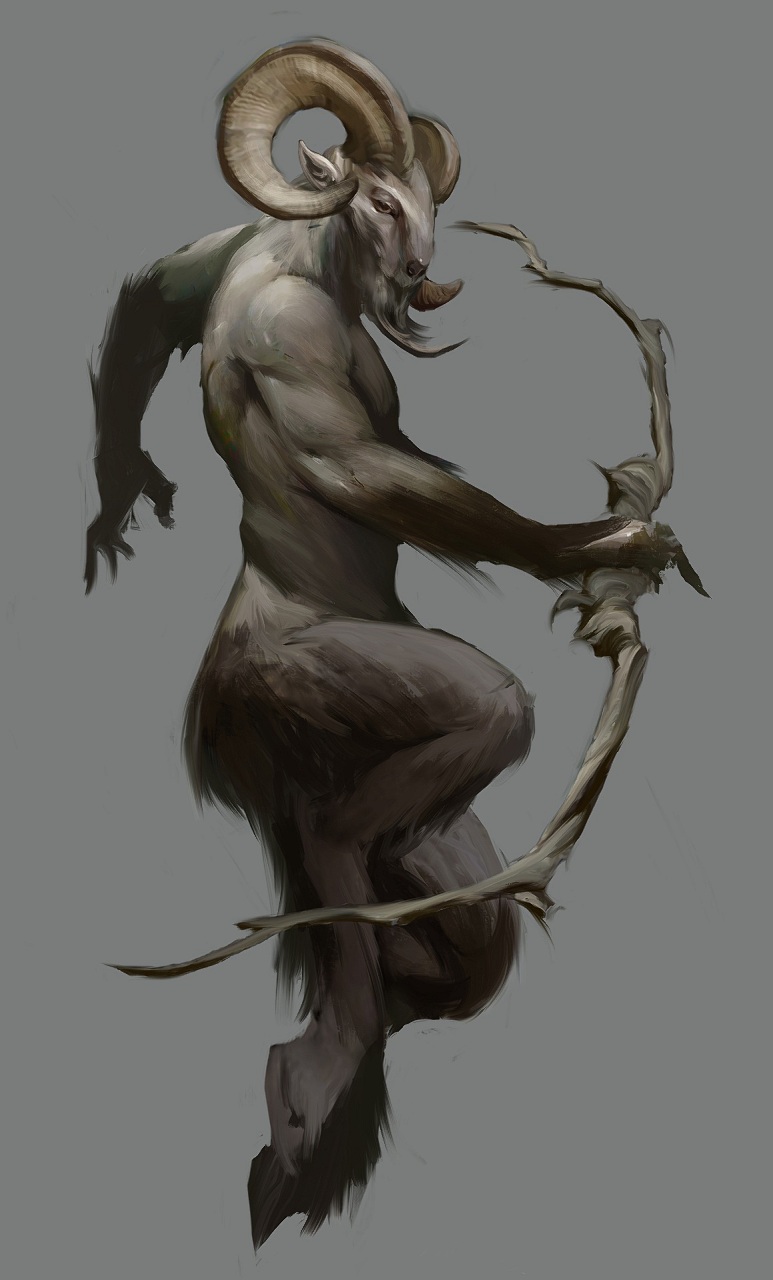The Seelie Court
" . . . the single assumption which makes our existence viable -- that somebody is watching . . ."
People tend to think of fey as lovely creatures of almost unearthly beauty and grace. This image epitomizes the fey of the Seelie Court within The Feywild. Many artists and bards, both fey and other, have striven to capture the beauty of the Seelie Court. Most have gone mad; none have truly succeeded. Pure manifestations of nature and beauty, the members of the Seelie Court view themselves as the pinnacle of perfection. This elitist attitude restricts status in the court to only pure-blood fey. A court fey can trace his or her lineage back several millennia, showing nothing but true fey (no other creature types by blood or breeding).
Fey high society and the fey realms, be they on the Plane of Faerie or fey high-society enclaves on the Material Plane, contain the only creatures whose opinions matter. Politics thrive in this elitist environment. Seelie fey form cliques and factionalize amongst themselves. In the endlessly politicking and gossiping world of the Seelie Court, status can be won by hosting guests (willing or unwilling) or attracting followers with great skill in a craft or performance art.
Seelie Court fey occasionally tolerate the company of beautiful or gifted creatures, preferring those of fey, elven, or celestial blood. These "court friends" may provide companionship and amusements, but only those with pure lineage may hold positions of importance.
Admittance to the Seelie Court for outsiders is extremely rare, even more so if the outsiders are not of pure fey blood. Upon entrance to the court, visitors must be prepared with valuable and unusual gifts for the Queen of Light, or they might find themselves lost in an endless hedge maze. Suitable gifts for the Queen include figurines of wondrous power, gems of brightness, and magical jewelry.
The physical appearance of the Seelie Court mirrors nature, to which the fey are intrinsically linked. White ash trees, strong and stately, with their branches intertwining to create a living ceiling, line the throne hall like marble columns. Gossamer streamers of iridescent blues, pinks and purples wind their way through the boughs. Phosphorescent flowers gleam like lanterns amidst the treetops. Semi-precious jewels of amethysts, tiger's eyes and topaz decorate flowers that float down the waterways lining the path to the throne. Statues carved of gold and adorned with gems further attest to the wealth and beauty of the current ruler, as each queen must display more splendor than the previous one or risk the gossip and scorn of her subjects. The throne itself, and queen who sits on it, are the focal points of the room. The throne of the Seelie Court is shaped like a large ice dragon, as brilliantly cold and glittery as the fey nobility.
The current ruler of the Seelie Court is Tiandra, the Summer Queen, who is one of the mightiest of the archfey. With a smile, she can ripen a crop, and with a frown, summon wildfires. Noble eladrin infused with the spirit of summer, count themselves as her barons. Other spirits of growth and good favor follow her banner. Her court and its followers are known as the Summer Fey.
Tiandra appears as an eladrin of great beauty, with honey-colored skin and hair that shimmers through all the colors of autumn leaves. Her eyes shine golden, like the sun. Her gaze alone can drive people mad. Her court is a reflection of her unearthly beauty, and the court can appear frivolous. Fairies flit at her side. Every inch of her throne room is decorated with flowers, fountains, and fine silks. This vivid and rich sensual imagery is all merely a distraction from her fierce intelligence. Tiandra is a master strategist, both in Court intrigues and on the battlefield. She also possesses an odd, dry sense of humor and a surprising streak of pragmatism.
Tiandra has an amused fondness for mortals. She craves the unpredictability and urgency instilled by their brief life span. She commands performances by mortal playwrights and commissions poems from poets who strike her fancy. She even goes so far as to take the occasional mortal lover. These relationships have tempered in her the disdain most archfey carry for mortals. She is nominally less fickle in her dealings with mortals than most other powerful fey. She has even been known to grant favors to those who serve her well.
The Seelie Court fey find The Unseelie Court fey absolutely repellent.
The Thrones
Both Tiandra and her sister, the Queen of Air and Darkness, hold court from ornately carved, dragon-shaped thrones. Commonly thought to be magical, the thrones' abilities are a matter of much speculation among the Courts. None but the queens know the truth.
Both courts are matriarchal monarchies. Sometimes males endeavor to take the throne, but none have survived the Rites of Succession. Each prospective ruler undergoes a lengthy rite of passage. Not every candidate survives these secret tests and rituals. The heir undertakes the trial when the former queen dies or expresses a willingness to abdicate her throne. In the final Rite of Succession, the aspiring queen ascends to sit on the throne. Sometimes a candidate dies at this point, rejected in some fashion by the throne. If the prospective queen lives through this final ceremony, the court acknowledges her as its rightful ruler.
Throne Guardian
Huge construct, neutral
Armor Class 23
Hit Points 30d10 (165)
Speed
60ft
Fly: 90ft
STR
25 +7
DEX
20 +5
CON
0
INT
11
0
WIS
10
0
CHA
1
-5
Challenge 15
Combat: A throne guardian exists for one purpose: to protect its master. It pursues this goal to the best of its ability, usually aware of the threat of combat (by using detect thoughts and true seeing to scan creatures in the vicinity) even before the first action is taken. It telepathically communicates all information to its controller.
Construct Traits: A throne guardian is immune to mind-affecting effects, poison, sleep, paralysis, stunning, disease, death effects, necromantic effects, and any effect that requires a Fortitude save unless it also works on objects. The creature is not subject to critical hits, subdual damage, ability damage, ability drain, energy drain, or death from massive damage. It cannot heal itself but can be healed through repair. It cannot be raised or resurrected. A throne guardian has darkvision (60-foot range).
Detect Thoughts (Su): A throne guardian can continuously detect thoughts as the spell (caster level 20th; save DC 25). It can suppress or resume this ability as a free action.
Etherealness (Su): This ability functions just like the spell of the same name (caster level 20th).
Fast Healing (Ex): A throne construct regains lost hit points at the rate of 10- per round. Fast healing does not restore hit points lost from starvation, thirst, or suffocation, and it does not allow the throne construct to regrow or reattach lost body parts.
Guard (Ex): The throne guardian moves swiftly to interpose parts of itself to protect its seated master by blocking blows and disrupting foes. Each attack against the seated controller takes a -2 penalty.
Plane Shift (Su): This ability functions just like the spell of the same name (caster level 20th).
Shield Other (Sp): The designated controller of the throne can activate this defensive ability if within 100 feet of the throne guardian. If the controller is seated in the throne, the ability is always active. Just as the spell of the same name, this ability transfers to the guardian half the damage that would otherwise be dealt to the master.
Spell Storing (Sp): The throne guardian can store one spell of 9th level or lower that is cast into it by another creature. It "casts" this spell when commanded by its master or when a predetermined situation arises. If seated in the throne, the master can opt to have the spell affect her as well. Once the spell is used, it can store another spell (or the same spell). The fey queens usually have time stop stored in their throne guardians.
Telepathy (Su): A throne guardian can communicate telepathically with its master.
True Seeing (Su): Throne guardians continuously use true seeing as the divine spell (caster level 12th).
Throne guardians are rare and powerful creatures. The Huge constructs can be made in almost any shape with a throne-like seat as a central focus. The two most spectacular are shaped like dragons and serve as the queen's throne in the Seelie and Unseelie Courts. The throne guardian in the Seelie Court appears as a stately carved dragon made entirely of ice. The Unseelie Court's throne looks like a grand dragon made of shadow and darkness.
Construction
A throne guardian's body must be sculpted from a single block of material weighing at least 5,000 pounds. The throne guardian costs 500,000 gp to create. This includes 50,000 gp for the body.
The first task is creating the body, a figure made from a large block of any one substance. Fashioning the body requires a successful Craft (sculpting) check (DC 25).
The second requirement is establishing the ritual or item required to designate ownership and control of the throne. The creator must labor for at least 8 hours each day in a specially prepared laboratory or workroom. The chamber resembles an alchemist's laboratory and a smithy, and costs 1,000 gp to establish.
When not working on the ritual, the character must rest and can perform no other activities except eating, sleeping, or talking. If personally constructing the creature's body, the creator can perform the building and ritual together. If the creator misses a day of the ritual, the process fails and must be started again. Money spent is lost, but XP spent are not. The throne guardian's body can be reused, as can the chamber.
Completing the ritual drains 10,000 XP from the creator and requires detect thoughts, etherealness, limited wish, locate object, make whole,plane shift, shield other, and true seeing, all of which must be cast on the final day of the ritual. The creator must cast the spells personally, but they can come from outside sources such as scrolls.
Prerequisites: Craft Wondrous Item feats, 20th level and able to cast arcane or divine spells.
Ritual or Amulet
The creator establishes a mechanism to designate dominion over the throne guardian. It may be a ritual or an item. Only one person at a time may be the throne guardian's master. In the case of a ritual, such control lasts until death or until the master uses a limited wish, miracle, or wish to remove ownership. If an amulet (or other item) is created as the control mechanism, the wearer has control. If the keyed amulet is destroyed, the guardian ceases to function until a new one is created. If the wearer dies but the amulet remains intact, the throne guardian carries out the last command given.
Throne Guardian Ritual, Seelie and Unseelie Courts
The creator of the court thrones preferred Lawful Neutral rulers upon the Seelie throne and Chaotic Neutral rulers upon the Unseelie throne. To take control of the throne is a simple matter: when the old queen dies or willingly abdicates, the candidate mounts the throne clad only in a simple gown without any magic equipment. (Though many suspect that candidates have cheated, no one has any proof.) When the supplicant is seated for the first time, a saving throw against a finger of death spell is made. If successful, the throne accepts her; if the save fails, the person dies.
Credits
- Information taken from Wizards of the Coast Dungeons and Dragons 3.5 D&D Archive Seelie and Unseelie Courts by Gwendolyn F. M. Kestrel and Faith M. Pricef located at http://archive.wizards.com/default.asp?x=dnd/fey/20021213a








Comments